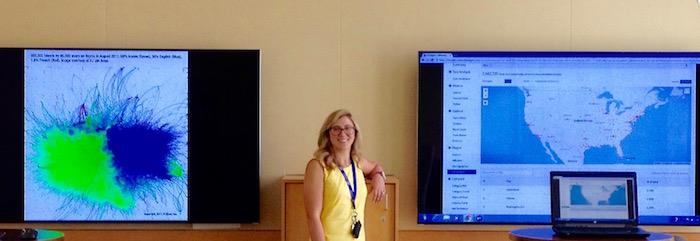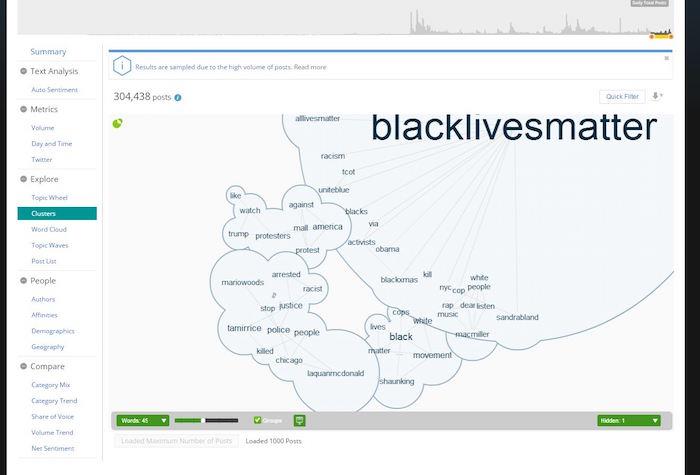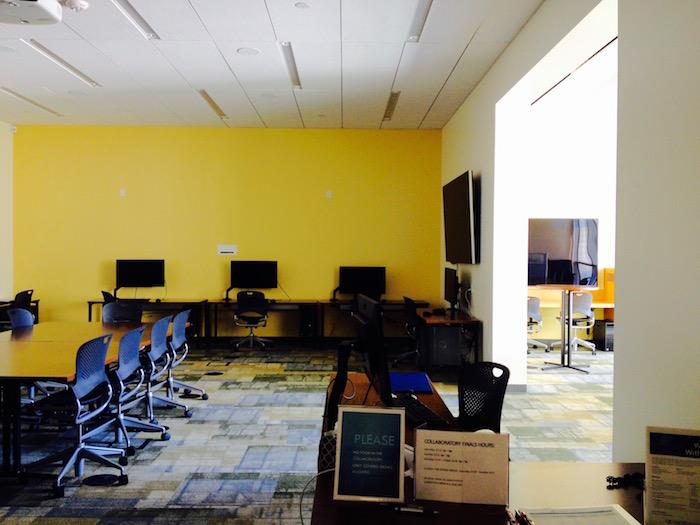Career Development
The Collaboratory is a technology-driven space in the new Library that can help grad students with data evaluation, data visualization, and research support. We talked to Collaboratory Director Stephanie Tulley about this exciting new resource.
It's been a two-year journey for Stephanie Tulley to bring the Interdisciplinary Research Collaboratory to the UCSB library (located in Room 2322-2324, Mountain Side). As the Social Sciences Data Librarian, she ran a pilot lab in the Winter of 2015. Seeing the success of that lab and sensing a need for more tools, more accessible data, and more space to do it in, she helped initiate the new Collaboratory so that students from all over campus would have access to data analysis and visualization tools.
I talked with Stephanie Tulley (MBA, M.S. in Library Science), who is also the Director of the Collaboratory, and found that she was not only very articulate about what the lab could do for the campus but also very passionate about data, content, collaboration, access, and all things related to data visualization. So far, her initiative has been a resounding success. The new Collaboratory has seen over 600 walk-in users since it opened two months ago.

What is this lab you speak of?
The Collaboratory is a technology-driven space with support and data services for UCSB researchers. Here you can find content, databases, and archival data. You can get help evaluating dataâ, basic software, and research tool support.
It's also a facility to support interdisciplinary projects across campus. We envision that by providing access to content not available elsewhere on campus, hosting data-visualization presentations, and offering software workshops, people from across campus will be able to meet each other and have serendipitous collaborations.
We see this as a centralized, neutral space, where students can have direct contact with researchers.

Why should students use this awesome space?
It's a cool space, not located in any one department. Many graduate departments have labs - and those labs have access to great tools - but students only see the same people from their department. If they come to the Collaboratory, they have the opportunity to see other grad students who could help them think of new ways to approach data visualization and analysis.
It's also built to support research. Any students who have an interest in the social sciences, research tools, using data analysis, or creating spatial data research will find it useful. Here they have access to many software programs and subscription based content collections. Not to mention, they can display it on one of our 85" 4K monitors!
How can students make use of these great resources?
We have walk-in hours everyday to make use of tools and content. Come in Sunday to Thursday from 1-8 p.m., or Friday to Saturday from 1-5 p.m.
However, if you need privacy or quiet, we can accommodate individuals and groups through reservations or consultations.

Who can help them with their data?
We have a great team of librarians to assist students. As Director, I can assist them with all things related to social sciences, business, and economics.
Jon Jablonski can help with all things spatial, including ArcGis. He has been helping with spatial data and visualization of data for years and knows what data is available and where to find it.
Tom Brittnacher is our Geospatial Data Curator and data-management expert. He knows all the best practices. If you need help with data management and making data usable in the future for yourself or other researchers, he is the man to see.
Shari Laster is our Government Information and Data Librarian. If it's data on a state, national, or international government level, she knows what's there and where to find it. She really knows her stuff and is very dedicated and passionate about public access.
We also have students who can help with tools and research programs. There are graduate students from Statistics and Bren. And we have upper-level undergraduates who can help with econometric tools like Stata or SAS. All the students are very eager to help with data, cleaning it up, and loading it into the software.
None of us know everything, but we have lots of coverage and support for researchers.

Tell me about your upcoming exhibitions.
We have some great exhibitions coming up for students to see.
Look for the Digital Humanities Exhibition in the Collab starting on Monday, March 28. Tyler Shoemaker from the English Department will curate examples of data visualization from the Digital Humanities. The work will be displayed on the lab monitors when they are not in use.
We also have a presentation and exhibit mid-April called Visual Provocations: Data, Culture, and Praxis put together by an interdisciplinary group of 6 graduate students.
For more information, email collaboratory@library.ucsb.edu.